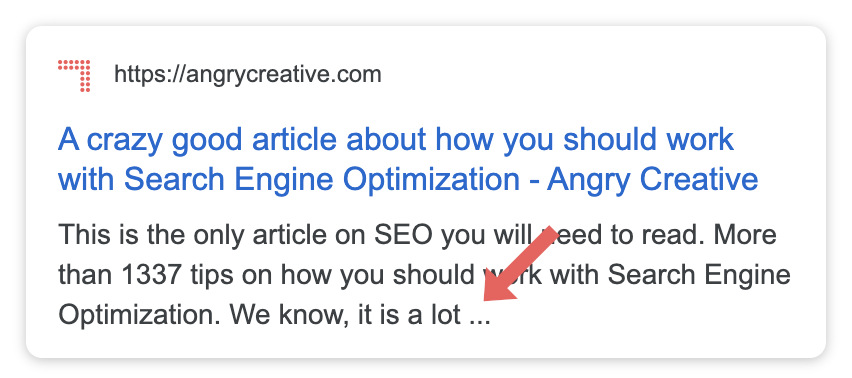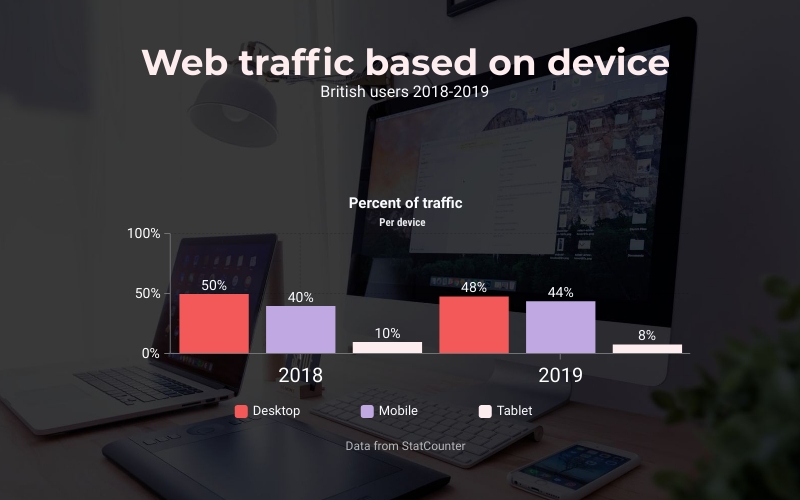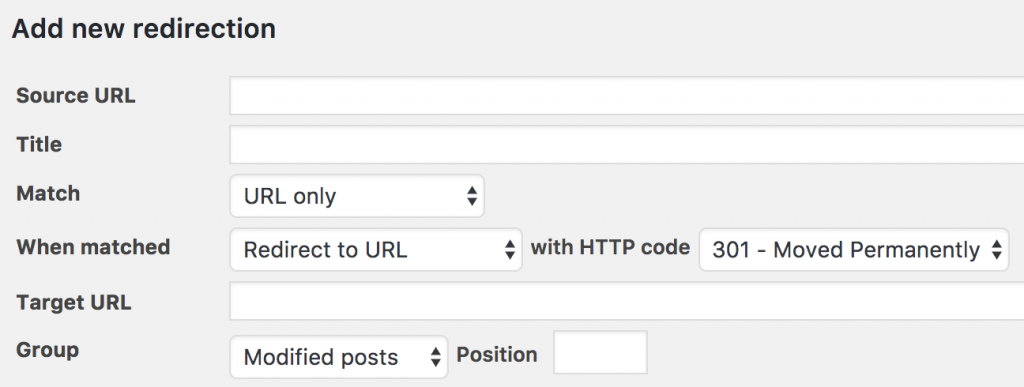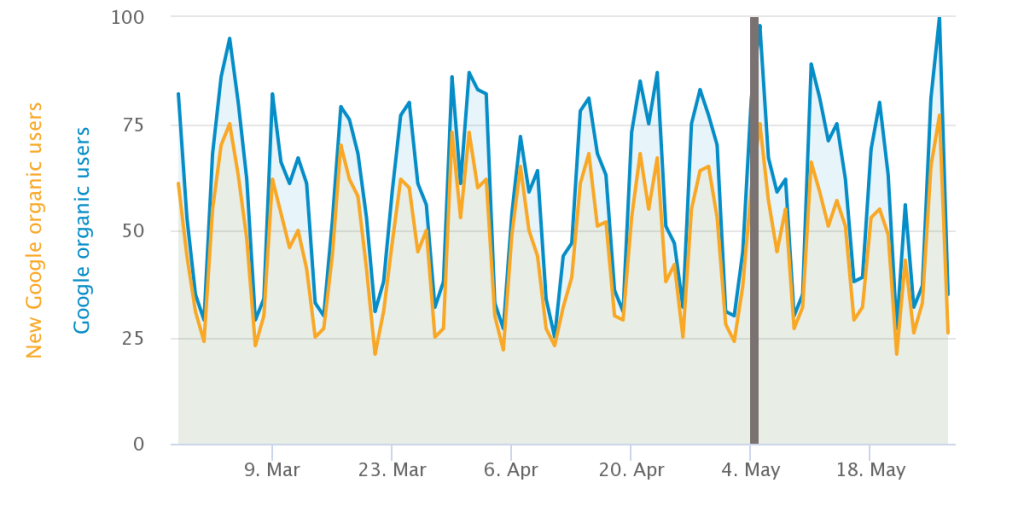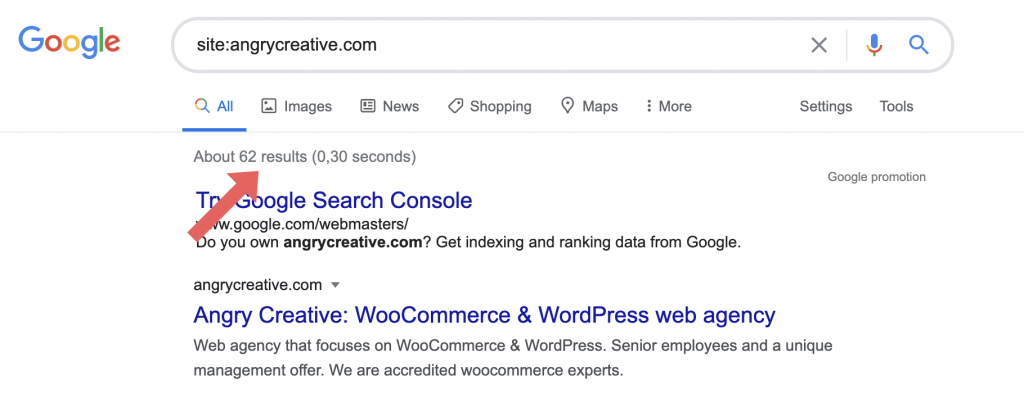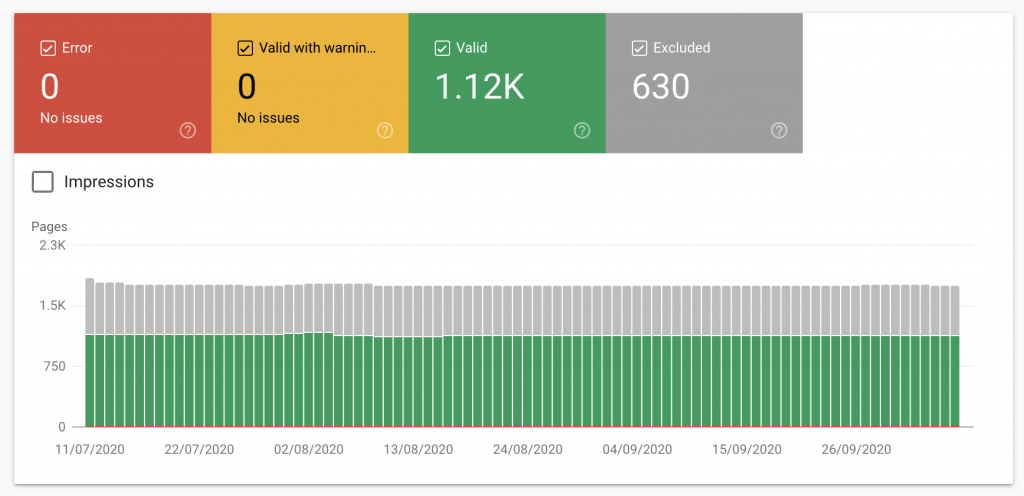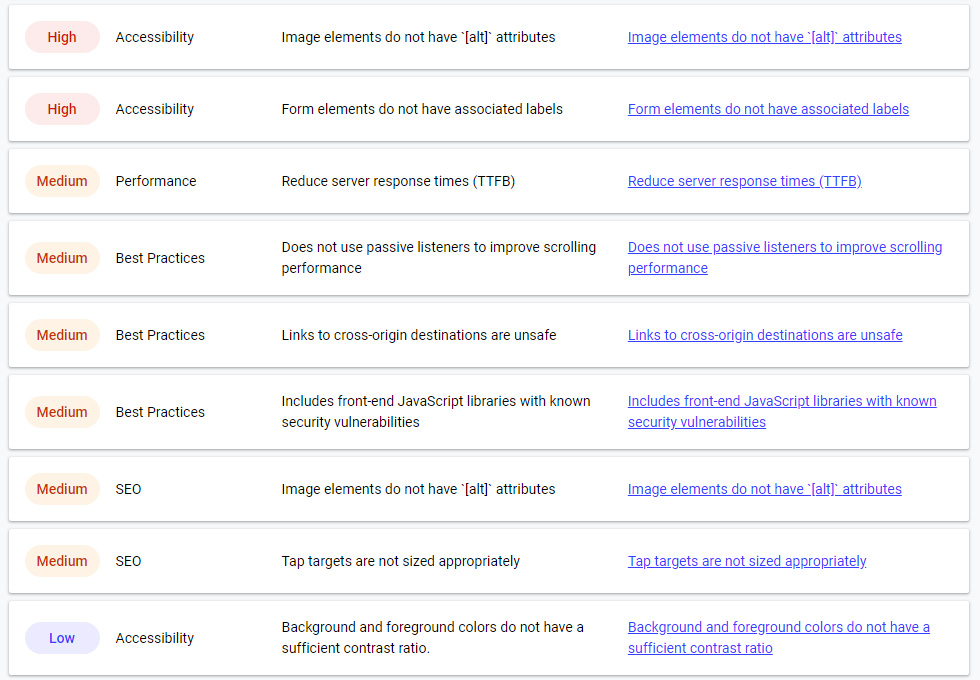
On-Page SEO concerns the optimization of everything you control on your site – content, layout, and performance.
Useful services for Search Engine Optimization
There are several different tools available to facilitate your work with SEO. Here is a list of tools that can be useful as you go through your search engine optimization.
Free services from Google
Google Search Console
Google PageSpeed Insights
Google Web Vitals
Google for Retail
Google My Business
Premium services for SEO
SEMrush
Ahrefs
Moz Pro
KWFinder
Other useful services and plugins
Hemmingway Editor
Grammarly
Sucuris site check
Panguin tool
Yoast SEO
This article will give you the tools to succeed in creating good content, layout, and optimized performance.
When it’s time to create your content, it can be useful to have already implemented research for keywords, which most likely will provide you with a couple of long-tails that may be worth using.
Content is the most important aspect of search engine optimization. Without content, you can not rank at all. But creating good content is not just about writing down a few words on a page. It takes a little more than that. Writing good content can, in fact, be a bit of an art.
Creating well-written content is, however, not everything. You also need to optimize your content for both Google and your visitors. Without properly optimized On-Page SEO, even the best content will fail.
The technical application and your site’s structure, is also essential for your SEO and your content.
Do you use WordPress/WooCommerce? To quickly get started with optimizing specific pages and products, we recommend Yoast SEO. It gives you a lot of other neat features. For example, you can enter canonical URLs, integrate it with the Google Search Console, and much more.
Create awesome introductions catch the visitors interest
Someone clicks on your content. Awesome, but the battle is not won yet!
What you need to do is write a really good introduction. Something that makes the visitor keep the interest up, making them stay on your website.
Three quick tips on how to get an excellent start:
- Keep the introduction short and explosive.
- Be clear in what the visitor can expect from the content.
- Catch the interest.
The first two points require no additional explanation, but how do you capture the visitor’s interest? You need to make them really want to read on and keep them away from closing the tab.
One trick is to give clues as to what the visitor gets out of the content, without telling them everything. You want to get the visitor engaged, pique their interest, and make them want to find out everything the content offers.
Example: “Do you want to become a master of SEO? Learn the secrets here! ”
However, no matter how great the introduction is, your page should always address the topic and keyword with which it ranks highest. You can ensure this by using available Keyword Research services.
Find tested and proven content for the topic (or specific keywords)
Have you found a keyword you want to rank with, but have a creative drought?
Why not start by finding already tested and proven content for the topic or the specific keyword and create content based on that.
If you do not have a specific keyword in mind, viral content can be a valid option to invest in. People love to share good content.
As always, there are services that can help you find the data to start from.
Once you have your data and ideas for the content, start creating and do it better than your competitors.
Use case studies where possible, build trust
There is an easy way to differentiate your content from other highly competitive keywords. Use case studies. It is something visual that often gets the visitor stuck.
Additionally, including real data and examples is also a good way to build trust and to showcase your product.
Make sure your texts are easy to read and understand
There is nothing worse than clicking on a search result and being greeted by a giant wall of text alone. Luckily it’s an easy fix.
Content with only text from start to finish is absolutely something you want to avoid.
Here are a few points to make your content easy to take in, read, and understand:
- Separate your content into logical sections, which is also good for SEO.
- Write short, simple sentences. We suggest 2 to 3 sentences per paragraph.
- Try to weave narrative text into your content.
- Use lists and bullet points (like these).
- Use pictures and illustrations to divide your content.
- Use slide shows, presentations, and videos when it feels appropriate.
If you use WordPress, Yoast is great for getting indications of how good readability your content has.
If you write in English, Hemmingway Editor is a great (free) tool that can help with this. Simply copy and paste your content and go through the tips that appear. Another option is Grammarly which is also a useful tool for keeping track of spelling and grammar (English). It is available in both free and premium versions.
Don’t just write for the sake of writing, make it interesting
First off, do not fall for the myth that longer content is better for search engine optimization. It is far from always the case. Should something be kept short, then keep it short. Do not write just for the sake of writing.
The articles in this series could probably have consisted of an additional +100 points. But a large part had probably become more like filler than anything else. In other words, it is important to be objective and avoid adding too much extra fluff.
The risk is that you will lose the visitor after just a few sentences and that the text does not feel meaningful to read. Which, of course, is something that you would want to avoid.
Create outbound links, it helps both you and your visitors.
Linking to other sources with factual content that directly relates to what you are writing about will build trust and create relationships with websites that have the same target audience as you. It also provides added value for your visitors.
It has been shown that there is a small connection between outbound links and Google rankings.
The connection is most likely due to Google looking at outbound links where there are no other ranking signals. Hence why we only call it a small connection. Therefore, you should not force outbound links into your content. Enter these where it provides added value.
The best practice for outbound links is to open these in a new tab/new window so that the visitor who clicks on it does not leave your page.
Avoid punishment, minimize thin content
If you have too much thin/duplicate content, Google’s Panda algorithm can penalize the site. However, fixing it is fairly simple.
Expand, remove, and/or deindex this type of content.
You can easily deindex content by setting the robots meta tag to “noindex, follow”. But be careful; you do not want to use this solution on the wrong pages.
<meta name=“robots” content=“noindex, follow”>
An example of pages in WordPress that should use this meta tag is archive pages. Even if you have an E-commerce, you should review product category pages that may fall under the same epithet. These pages can also be seen as duplicate content if you use content filtering.
Rank higher by having the keyword in the main title
There are definitely cases where pages rank high without the primary keyword being included in the title tag. Links can trump most things. But there are clear connections between utilizing the keyword and higher rankings.
Therefore, make sure that each page has a unique title with your keyword specified in the title tag. Additionally, keep in mind that you should not use the keyword more than once in the title. Use only one meta description and one H1 tag per page and include the keyword.
Do not overdo it, a page should generally contain one H1 tag, which is the main title of the page. There is no need to force additional keywords.
Want to improve your SEO performance? Start with effective keyword research. Check out our guide on Keyword Research for WordPress to learn how to target the right keywords and boost your website’s visibility.
Create awesome content that people can’t resist clicking on
Do you hold a nice third place in the search results but want more clicks? Make your headline stands. You should make your potential visitors feel like they need to click on your link.
You may only have 55 characters to use, but you can do a lot more than you would think with them. Create a compelling headline, a headline that catches the eye, and feel free to cater to the emotional side if you can.

A tip might be to look at how viral pages on Facebook generate clicks with their headlines. These pages have to rely entirely on getting clicks, in other words, they work very hard with their headings. You do not have to take it quite as far as the viral pages, pure clickbait may not be a preferable option for you, but you get the point.
Another tip is to look at how other pages that share your audience title their headlines and then do it differently. If your headlines stand out, the possibility of clicks increases. If your CTR goes up, the ranking will most likely follow.
E-commerce site? Capture users with intent to buy via keywords
Do you run a page with E-commerce? Then you want to catch the ones who search with the intention of shopping.
If someone is searching for, let’s say a “gray suit”, they might look at:
- Reviews
- Images of grey suits
- Information about grey suits
But if someone is searching for “buy a gray suit” then it is more likely that the person is in the buying stage of the process. Adding a word like “buy / buy” to the headline could therefore create better conditions for capturing these buyers.
An appropriate heading for a product page on an E-commerce site could be, for example:
Buy {product name} online
The flexibility of this title is that you can predefine it in the template to avoid having to enter custom headings for thousands of products.
Don’t miss out on reading more about what you need to think about when it comes to e-commerce and how you can get help from Google for Retail / Merchant Center in our article on Off-Page SEO.
Increase your CTR by avoiding truncated meta tags
The search results break title tags after 512px (around 55 characters) in desktop view. Meta descriptions are broken up after approx: 923px (around 155 characters). Carved headings and descriptions are not the prettiest and also has a very negative effect on CTR.
In other words, you should always stay below 55 characters for headings and below 155 characters for descriptions.
SELL the contents of the meta tag for the best CTR
The meta description is your sales opportunity in the search results.
The description will not always appear in the search results, sometimes Google itself picks out better contextually matching text from your content. But when it does appear, a well-written meta description can still generate a few extra clicks.
In other words, write unique, captivating descriptions that communicate value and attract clicks for each page. But do not stop there. Review the description after a while to see if you can make improvements. Test different variations to see if the CTR increases.
If you have an E-commerce site, you can, for example, try adding the price for products to see if it generates more clicks.
Do not stop testing, optimize your CTR.
Put your content in the best position
Your visitors come for your content! Therefore, make sure that the content is easily accessible immediately after they click into the page. At a bare minimum, the title should be directly visible without the visitor having to scroll.
You should also make sure that you do not have distracting elements that divert the visitors focus from the content itself. Things like:
- Too many ads at the top – Ads can be annoying and Google can penalize pages for things that annoy their users.
- Annoying pop-ups – Perfect for conversions? yes possibly. But too many pop-ups will cause the visitor to leave the page immediately. Make sure any pop-ups are easy to close.
- Parent Ads – Google has confirmed that they may penalize pages that use Parent and Full Screen Ads in mobile view. In other words, be careful with the use of overarching variations, especially those ads that prevent the visitor from directly viewing the content on the page.
Recommended reading: Surviving Google’s New Policy Against Interstitial Ads.
More visitors with correct device adaptation
Your site should always be functional on most types of devices, operating systems and resolutions. In other words, your website should be mobile-friendly.
You should also consider customizing the accessibility of your website so that everyone can access the content.
Customizing your website has become especially important as of July 2019 when Google introduced its Mobile-first indexing. This means that the indexing is primarily for mobile view.
We at Angry Creative adapt all solutions for mobile, as standard.
Get more traffic through Google Image Search by optimizing your images
Google image search can generate lots of traffic. Especially if you have an E-commerce site. Many people simply start their research through Google image search rather than through a regular Google search.
Unfortunately, Google is not very good at reading what the images represent, in other words, you need to tell Google what an image represents. However, optimizing your images for Google image search is relatively easy.
To help Google along the way, add alt captions to your images (see it as captions) and use descriptive file names.
Good:
<img src="photo-of-a-cute-cat.jpg" alt="photo of a cute cat">
Not Good:
<img src="img_001337.jpg" alt="">
You should also make sure to use compressed images optimized for fast loading. Optimized images provide benefits for both image searches and general searches because optimized pages rank higher.
If you want to rank your products in Google’s section for shopping, you should also consider using clear images (eg product against a white background). Otherwise, it is likely that Google will skip these for listing with extra SERP functionality. Read more about Google for Retail.
If you use WordPress, there are multiple good plugins for optimizing images. One example is Imagify which optimizes your images immediately when you upload them. There are also options for optimizing images in bulk. In our solutions, we among other plugins use Cloudflare Polish for optimizing images.
Reference Google: Image elements do not have [alt] attributes
Use short, descriptive URLs for clarity
If your CMS allows it, use short descriptive URLs / permalinks.
The pros of doing this:
- Looks neater.
- Using keywords in the address can somewhat boost your SEO.
- Links in plain text (eg if you share a link with someone) contain your primary keyword
A rule of thumb can be to use 2-3 words and avoid stop words.
Minimize “Boilerplate” text to avoid being penalized by Google’s algorithms
“Boilerplate” text, i.e., blocks of text that appear on several different parts of a website. This type of text does not have to be a problem if you have a lot of other content on your pages. However, it can create problems, particularly on E-commerce sites.
Product pages often tend to have shorter descriptions of the product and repeated texts about conditions, shipping, etc.
What that tells Google is that the product pages only contain ~ 10% unique value content. This, in turn, means that Google’s Panda algorithm most likely will get in the way of you.
Recommended reading:Duplicate Content SEO Advice From Google.
Reference Google: Document does not have a valid rel=canonical
Include a constantly visible address for better local SEO
Your contact information should always be easily accessible on the website.
If you also run a local company, it is especially important to also state the physical address. Make it visible in the footer, for example, to strengthen location data at Google and, at the same time, give the visitor a trustworthy impression.
Choose a cool branded domain name rather than one that is based on keywords. You won’t lose anything in your SEO
There are very few benefits (if any) for SEO to have their business’ primary keywords as domain names (EDM).
Preferably choose a nicely branded domain name. Ignoring SEO, it also looks much better.
Recommended reading: Goodbye Exact Match Domains, Hello Brandable Websites.
Listen to the advice from Google Pagespeed Insights for improved performance
Your page’s loading time can be an important factor for ranking better. If you disregard everything else, a fast site will have a higher rank than a slow one. The connections between pages with optimized page loading and a higher rank are not huge, but there is a difference.
To view your site’s load speed you can use Google Pagespeed Insights. You can also hit multiple birds with one stone with Google’s latest tools, Web Vitals.
Both of these services give you useful recommendations on how to optimize your site for the best results. Listen to these recommendations and optimize your page accordingly.
If you use WordPress, activate a cache plugin for optimized performance
A good cache plugin can make a big difference in how quickly your page loads.
Without cache plugins, WordPress can be relatively heavy when it comes to database queries. It can really slow down your page at traffic peaks, which is exactly when you would want a fast page.
With a cache plugin, the visitor receives a static HTML version of your page. A much faster way to load content, which means you can manage more traffic.
There are several good cache plugins for WordPress out there. But should we mention one that is really effective, we will mention WP Rocket.
If you have a larger page, it usually takes a little more than just activating a cache plugin. In our solutions with Qala, we offer both load balancing and advanced cache optimization with Cloudflare.
Configure Accelerated Mobile Pages (AMP) and take advantage of the search results
Accelerated Mobile Pages (AMP) are stripped-down versions of web pages that load lightning fast on mobile devices.
It is likely that Google will boost rankings for AMP-enabled sites in the future.
Google is already customizing search results for AMP pages by marking them with a small flash. If the page also uses rich snippets / structured data, it will appear higher in the search results.

If you use WordPress there is a dedicated plugin for activating Accelerated Mobile Pages for your website.
Boost your CTR by using Rich Snippets / Structured Data
Organic search is more competitive than ever before. Therefore, it is extra important to try to do everything you can to get more clicks.
Rich snippets are descriptive HTML tags that help search engines better understand the content of websites. These appear in the search results as extra data that can differentiate your content from others and thus give higher CTR.
Examples of extra data that can be displayed are ratings, which can be extra useful when running E-commerce.
If you use WooCommerce as we do in our solution with Qala, you will get a standard set of structured data for products.
Update your content frequently to boost traffic
To keep your pages relevant, you want to update them continuously as it helps to improve rankings.
You should also create “Evergreen content,” i.e., content that is always relevant, regardless of whether it is 2012 or 2032.
Create a flow in the hierarchy of your website for better SEO
Make Google PageRank easier by creating a flow in the hierarchy/structure of your site.
You should make sure that basically, all pages are a maximum of one click away from the home page. For critical pages, you probably also want to create more entries for the best results.
Recommended reading: How to Create a Site Structure That Will Enhance SEO
Do not be penalized for duplicate content. Choose www or non-www
This is something that, surprisingly, many websites still do wrong.
Google handles it better than it did before, but can still see http://www.website.com/url and http://website.com/url as two separate pages and thus flag it as duplicated content.
In other words, one should use one or the other and enter a 301 redirect for the one that is not used. You can configure canonical URLs, but a redirect with 301 is preferable.
It may also be helpful to indicate the preferred address for the Google Search Console site after verifying both addresses.
Recommended reading: WWW vs non-WWW – Which is Better For WordPress SEO?
Use Canonical URLs for duplicate content, avoid penalties
Always use Canonical URLs for pages with similar content so as not to be penalized in search results.
<link rel=“canonical” href=“https://webbplats.com/originalversion-av-sidan/”>
It is not uncommon for different E-commerce solutions that allow filtering by category with various attributes to create multiple urls for similar content.
Block sensitive content with robots.txt for better security
Block sensitive content (such as admin parts) for Googlebot and other crawlers in robots.txt.
A simple example of blocking the admin in WordPress
User-agent: *
Disallow: /wp-admin
Keep the link value, use 301 redirects for content that has been moved/deleted
Always use 301 redirects to redirect content from old to new pages.
In the past, redirects with 301 could result in lower link value. However, this is no longer the case. Google has confirmed that 301 redirects will no longer be penalized. Google also accepts 302 redirects (temporarily moved content), but 301 is still preferable when moving content permanently.
To manage redirects in WordPress, the Redirection plugin or the premium version of Yoast SEO are recommended.
Sudden loss of search traffic, you might have been penalized
If you see a sudden drop in the search traffic to your site, it may indicate that Google has penalized you. However, this does not have to be the case, a drop can also have other causes.
Things to investigate:
- Has your website recently had downtime?
- Is the analytics tracking code entered correctly?
- Have you happened to block search crawlers?
If these things look like they should, then it is likely that the site has received some kind of punishment.
Even if you have not officially received a punishment yet, it is not guaranteed that you are not about to receive one. Drops in search traffic that can be linked to updates to Google’s algorithms may indicate that you have a penalty to expect based on these algorithms. Use Panguin tool from Baracuda Digital to predict changing patterns in your search traffic. Be aware of changes that occur in connection with updates to Google’s algorithms and take precautionary measures accordingly.
Use a Content Delivery Network (CDN) for better performance
Many websites use a single hosting for their content. For example, in Britain. But what happens then, when a visitor comes from the USA? Well, content needs to be sent across half the globe, and that affects loading times (which is not good for SEO).
Suppose you use Content Delivery Networks (CDN). In that case, you solve such problems as these networks create a cached version of your website on several different servers in several different locations throughout the world. This means that when a visitor requests a page, it will be sent from the nearest physical location and thus load faster.
Using a CDN can both speed up your site and save on bandwidth costs.
In our solutions, Angry Creative uses Cloudflare, which partly solves the bit with CDN and also provides several other optimizations. Cloudflare is one of the most popular services available and is very easy to use.
Install SSL certificates and build trust
Today, there is no excuse for NOT using SSL certificates for your website. With Let’s Encrypt’s entry, you can easily create free certificates for secure connections over HTTPS.
Pages on your website that retrieve personal information should ALWAYS be protected with SSL certificates. One such example is E-commerce where very sensitive personal information is handled. A store requires SSL certificates to make customers feel safe.
Google also provides some benefit to sites that use SSL.
View potential problems with indexing via a search on “site: yourwebsite.com”
Conducting a Google search for your site using “site: yourwebsite.com” can give you useful information about how many pages have been indexed.
You should be aware if this search gives too many page results. This is usually an indication that something is not quite right with the indexing of your site.
Use the Google Search Console and Web Vitals for action feedback
You can get direct input from Google on your site’s problems and tips on how to go about fixing them.
Use Google Search Console to keep an eye on problems that may arise and use Web Vitals to see what improvements can be made.
There are several useful tools in Search Console and Web Vitals. Google suggests improvements that should, of course, be implemented.
Find errors with Search Console
See what problems Google has found when crawling your site. If you see 404 errors, you need to fix them with 301 redirects.
500 server error may indicate that performance needs to be reviewed at the server level.
Suggestions for improvements with Web Vitals
For more information on how to improve your website from Google’s point of view, you can use Google’s latest tool Web Vitals.
After analyzing your website, Google provides clear tips for improvement. For every improvement that can be made for your website, an article with information from Google is linked.
Keep security high, scan your website
Security is essential from many perspectives. A “hacked” page can be a nightmare for your SEO. If you are careless, Google can remove all the site’s SERPs, which means no more organic traffic!
In other words, security is very important, to say the least, not only from an SEO perspective. You should be vigilant and also take preventive measures to ensure that you keep your site clean. Some insidious hackers only add unwanted links hidden in the content.
Sucuris site check is a handy tool for quickly scanning through a website to detect any notches or security holes.
Upload a Sitemap to help Google along the way
The clearer we can be when communicating with Google, the better. Adding one or multiple sitemaps to your site is a good idea.
You will also find tools for this in the Google Search Console.
Sitemaps are not a high priority if you already have a well-built semantic website with a sensible hierarchy. But there are still some things that should be done.
In WordPress, you can easily automate the generation of sitemaps with Yoast SEO.
Recommended reading: What is an XML sitemap and why should you have one?
Make it ridiculously easy to share your content
Social media has no direct influence on page rankings. But it spreads your content, and the chance of getting inbound links increases.
Indirectly, social media can affect rankings with things like
- Traffic/buzz
- Brand recognition
- Searches based on your URLs
Making it super easy to share your content is therefore something worth practicing.
- Share your content on social media – Always have an active presence on social networks and share your content. The more people who see your content, the more shares.
- Use clear and visible share buttons – If your visitors do not see the share buttons, they will not use them. Make sure your share buttons are visible at first glance.
- Use Open Graph metadata – This makes your links in social media (eg Facebook / Twitter) more visually appealing. Links that stand out and are appealing will get more clicks and more shares. Yoast is an excellent plugin to manage this automatically.
- Always create selected images for your content – Use bright, colorful images that capture people’s attention. It will help you get more clicks from social media.
You probably want to be present on all major social networks. Then you can put the finishing touches on the networks that best suit your industry. An article about recruitment probably works best on eg LinkedIn, while a flower page may be best suited on Pinterest.
Final tips
Finally, here are 5 quick tips that should be more or less obvious when working with SEO and marketing of your website.
- Learn as much as you can about SEO from several different sources. Do not miss our series of articles for search engine optimization in our knowledge bank.
- Keep up to date. The industry changes quickly. Google is constantly making changes that you want to keep up to date with.
- Be patient! Effective SEO requires hard work and time commitment; nothing happens overnight. It’s worth it in the long run. Studies show that SEO is what gives the best ROI for inbound market channels.
- Avoid dubious methods at all costs. For example, buying inbound links can often be more expensive than investing in tested and proven SEO methods.
- Do not spam!
Good luck with your on-page SEO!
Are you excited to learn more about how to optimize your site for search engines?
Do not miss our other articles on the subject.
- SEO Strategy – Analyzes and measurable CPI – Creating an SEO strategy.
- Keyword Research – Rank Higher by Finding the Right Keyword.
- Off-Page SEO – Take advantage of opportunities outside of your website.
- SEO strategy guide for WooCommerce
- On-Site Search
Are you ready to take your website to the next level?
We take responsibility for the operation, maintenance & management of WordPress & WooCommerce. We will accept responsibility, superseding your current supplier, and solve ongoing bugs and other problems that may arise. All for a fixed monthly cost.
You may also be interested in these articles
Brexit for WooCommerce sellers
The impact of Brexit is huge. There are very many implications for those in e-commerce businesses…
Read more
Brexit for WooCommerce sellers
Cynefin: a valuable framework to classify, communicate and respond to tasks in digital projects
Cynefin. At Angry Creative we think it’s a vital part of digital projects. It helps us to underst…
Read more
Cynefin: a valuable framework to classify, communicate and respond to tasks in digital projects
Web fonts for WordPress
Fonts control how your text is displayed – how the letters actually look. web-safe fonts. W…
Read more
Web fonts for WordPress
Subscribe to our newsletter for tips, inspiration and insight about WordPress and WooCommerce and the digital world beyond.
Time to take the next step towards a more effective website?
Contact us, and we can talk more about how we can take your business to the next level together.



